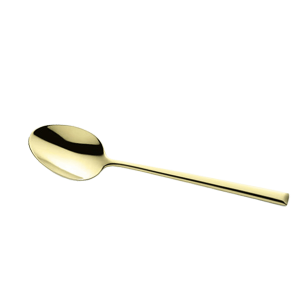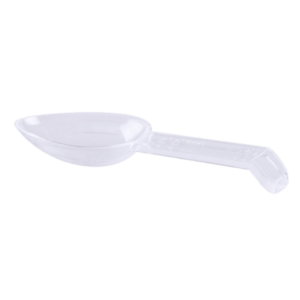
Omega-3 for Kids: Benefits & Easy Daily Tips
Thu 3 July 2025 by Lewis Wiggins
It’s Tuesday morning, quarter to eight. You’re in the kitchen making breakfast for your daughter. Her little brother is in his chair, already fiddling with his bowl of yogurt. As you cut the apple into pieces, you suddenly hear loudly: “Mom, I don’t like apple!”
Slightly annoyed, you try to cover up your frustration. Yesterday the vegetables were difficult too. Vegetables and fruit are important, you know that all too well as a mother. Yet eating healthy is a puzzle every day. Especially when it comes to nutrients like omega-3 fatty acids, which are crucial for your child’s growth and development.
You know it’s important, but at the same time you wonder: is my child getting enough? And if not through food, then how?
Every mother wants the very best for her child. But how do you know for sure that your little one is really getting all the nutrients needed for growth, development and health? One nutrient that is often underestimated in the health world: omega-3 fatty acids.
In this article you’ll read:
- Why omega-3 is so important for children (and also for you during pregnancy & breastfeeding)
- And how much omega-3 a child needs
- What the best form is: fish oil, cod liver oil or algae oil
- Which supplements are suitable and tasty, even for picky eaters
- Practical tips to effortlessly introduce fish or omega-3 into the family
Why is Omega-3 Important for Children?
Omega-3 fatty acids, you might know them mainly from commercials or labels on margarine. But did you know that these fats are really crucial for your child’s health? Specifically two types of omega-3: EPA and DHA.
Omega-3 helps with brain and eye development, supports concentration, and improves immunity. Especially in young children, omega-3 is indispensable because their brains are developing rapidly right now. Scientists have determined that children who get enough omega-3 learn better, get sick less often, and concentrate more easily at school (McNamara Carlson, 2006; Yehuda et al., 2005).
Just imagine: your child sits quietly at the table coloring, can focus better on a task, and gets through the flu season more easily in winter. That sounds ideal, doesn’t it?
But what exactly does science say about this, and how do you ensure your child gets these essential fatty acids?
Science Behind Omega-3 Made Understandable
We just talked about how important omega-3 is for children. You might think: sounds logical, but why exactly is this fat so important? As a mother, you don’t want complicated medical texts. You want clear answers you can actually use.
Omega-3 fats, especially EPA and DHA, are a kind of building blocks that our body can’t make well itself. So you have to get them through food or supplements. Especially DHA is indispensable for the development of brain and eyes in children. Research clearly shows that children who get enough DHA can concentrate better, learn more easily and see more sharply (McNamara Carlson, 2006; Yehuda et al., 2005).
You might recognize it: your child gets easily distracted, fidgets in their chair or forgets what was just said. Extra omega-3 can help improve that focus.
Children who receive omega-3 supplements are calmer in class and score better on tests (Richardson Montgomery, 2005; Bloch Qawasmi, 2011). Omega-3 also supports immunity, especially in combination with vitamin D. Children who receive omega-3 (with vitamin D) supplements get sick less often and recover faster (Calder, 2010).
Additionally, omega-3 helps reduce inflammation in the body, so children are less likely to suffer from ailments like eczema, allergies or chronic colds (Miles Calder, 2017). Especially in busy families and classrooms where colds and flu spread quickly, this is a nice advantage.
Omega-3 also helps reduce inflammation in the body. That sounds complicated, but it simply means your child is less likely to suffer from ailments like eczema, allergies or chronic colds.
Omega-3 from Baby to Elementary School
You might now wonder: “Okay, clear, omega-3 is important. But how much does my child actually need? Is that the same for a baby as for my toddler?”
Very valid question. The need for omega-3 does indeed change with your child’s age. Let me explain briefly:
- Babies from 6 months need about 250 mg DHA per day (EFSA, 2010). You can give this in liquid fish oil and/or cod liver oil. This amounts to about half a dessert spoon. Do pay close attention to the amount of DHA EPA.
- Toddlers (1–3 years) grow fast and develop rapidly. Therefore they need about 250 to 500 mg omega-3 (DHA/EPA) daily (EFSA, 2010). This amounts to about one dessert spoon of a suitable omega-3 supplement per day. However, start first with half a dessert spoon to let the child get used to the oil.
- From 4+ years you need 500mg DHA/EPA daily (EFSA, 2010). This is also the recommended daily amount for adults. That’s one dessert spoon of omega-3 oil per day, provided the ratios are correct.
That might sound like a lot, but fortunately there are supplements that are extremely suitable for children. Like Möller’s Omega-3 with flavors like Tutti Frutti or Lemon, which most children find delicious. This makes it easy for both you and your child.
Omega-3 Pregnancy
During pregnancy you enter a world full of advice and lists. “Don’t eat raw fish, be careful with liver sausage, and don’t forget your folic acid!” You probably recognize this. Sometimes I couldn’t see the forest for the trees.
One piece of advice stays very clear: make sure you get enough omega-3. Not only because it’s healthy for yourself, but especially because it’s essential for the brain development of your unborn child. Scientists discovered that sufficient omega-3 during pregnancy increases the chance of better cognitive development, a strong immune system and less chance of allergies in your child. That sounds good, doesn’t it?
The Health Council advises pregnant women and breastfeeding women to get 250-450 mg omega-3 fatty acids (EPA and DHA) daily (Koletzko et al., 2007; Nutrition Center, n.d.). Sufficient intake supports cognitive development, the immune system and reduces the chance of allergies in the child (Gould et al., 2013).
And yes, cod liver oil is also fine during pregnancy! High-quality cod liver oil like Möller’s Omega-3 is safe and also contains vitamin D, which is important for the growth of your child’s bones and teeth.
Breastfeeding: What’s Important to Know?
After delivery, a lot of new questions come up. You want to be sure that your child gets all the nutrients it needs. And again omega-3 is mentioned as a crucial nutrient.
Breastfeeding is fantastic, but can be quite physically demanding. Your body gives many nutrients to your child, including DHA. Your intake largely determines how much DHA your baby gets through breast milk.
By taking extra omega-3 during breastfeeding, you support your baby’s brain and eye development. It also helps your own immunity and energy level. Because let’s be honest: broken nights are tough enough, right?
Fish Oil, Cod Liver Oil or Algae Oil: Make it Easy for Yourself
You might now think: “Fine, omega-3 is important, but which form should I actually choose for myself and my child?”. Capsules, liquid oil, cod liver oil, algae oil, what’s really the best?
Let’s make it clear:
Fish oil and cod liver oil both come from fish. The difference? Cod liver oil is fish oil from cod liver and contains extra vitamin A and D. This makes it extra good for immunity, growth and strong bones. Fish oil usually comes from other parts of the fish and typically doesn’t naturally contain vitamin A and D. Here you can read more about the differences between cod liver oil and fish oil.
Algae oil is the plant-based version of omega-3, ideal for vegetarians and vegans, or if you have a fish allergy. Algae are the only plant source that directly contains DHA. But note: algae oil often contains less omega-3 per dose than cod liver oil or fish oil.
Azize and her family ultimately chose cod liver oil. Why? Because it combines multiple benefits in one supplement. “And the Möller’s Omega-3 cod liver oil we use also tastes really good. My children now ask for their daily spoonful themselves. Believe me, what a relief!”
Why Cod Liver Oil is a Smart Choice
Most people who hear the word cod liver oil often pull a skeptical face. “Cod liver oil, isn’t that the nasty drink our grandparents had to swallow?” That’s right, it used to be not exactly tasty. But fortunately that’s in the past and it’s an extremely healthy product with enormous benefits.
Cod liver oil offers vitamin D and A in addition to omega-3, which is important for immunity, bones and teeth. Especially in the Netherlands, where many children (and adults too) don’t get enough vitamin D, cod liver oil is an effective supplement (Koletzko et al., 2007).
Additionally, Möller’s Omega-3 is produced very carefully. They only use cod from pure waters and ensure all harmful substances are filtered out. So you know for sure your child gets safe and pure cod liver oil.
But most importantly: it’s really tasty. My children happily choose their favorite flavor (Tutti Frutti or lemon) and so the daily spoonful of omega-3 is never a struggle anymore.
Tips to get Omega-3 into your Family Life. Without Hassle!
You might now think: “Fine, omega-3 is important, I understand why cod liver oil is convenient, but how do I get my child to take it daily without fuss?”
Through trial and error we’ve discovered some clever tricks that have made taking omega-3 a pleasant ritual.
Here are our best tips for you:
1. Make it a morning ritual
Children love structure and predictability. For example, always put a bottle of cod liver oil on the table during breakfast. This way taking it becomes part of a daily ritual, just like brushing teeth or getting dressed. Nice and easy and naturally healthy!
2. Choose a flavor that suits your child
Honestly: children usually don’t immediately like fish oil. That’s why child-friendly flavors like Tutti Frutti or Lemon are ideal. Möller’s Omega-3 Tutti Frutti tastes so good it’s almost experienced like candy – without sugar of course.
3. Mix it cleverly through food
Really not working straight from the spoon? Then mix the cod liver oil through something tasty, like yogurt, oatmeal or a smoothie. You won’t taste it at all!
4. Make it fun with a reward
A sticker chart or small reward always works well. Put a compliment or small reward against it. This makes taking omega-3 a celebration instead of a daily struggle. Plus you’re helping build a promising and vital future.
Reassurance for Parents
We started this story on Tuesday morning, with a recognizable scene: you’re standing at the counter, cutting fruit, making sandwiches and wondering if your child is getting everything it needs. Giving healthy food to your child can sometimes feel like a challenge. Especially when it comes to omega-3, a substance your child really needs, but which you might not have much experience with yet.
Fortunately, it’s not as complicated as it seems. Omega-3 is really important for your child’s brain, immunity and development. From pregnancy through elementary school years, omega-3 supports children’s growth, health and concentration ability. With a daily portion of cod liver oil like Möller’s Omega-3, you give your child exactly what it needs – simple and without hassle.
We’ve discussed practical tips that make giving omega-3 easier: make it part of your morning ritual, choose a flavor children like and use clever tricks to mix it unnoticed through food. This way taking omega-3 becomes a habit instead of a struggle.
And don’t forget: you’re doing fantastic. The care and attention you have for healthy nutrition for your child pays off in a healthier, stronger and happier child. Omega-3 isn’t complicated, but rather a smart and simple addition to your daily family routine.
| Age group | Recommended amount (mg/day) | Source (APA) |
| Babies | 250 | EFSA Panel on Dietetic Products, Nutrition and Allergies (2010) |
| Toddlers (1-3 years) | 250-500 | EFSA Panel on Dietetic Products, Nutrition and Allergies (2010) |
| Children (4+ years) | 500 | EFSA Panel on Dietetic Products, Nutrition and Allergies (2010) |
| Pregnant/breastfeeding | 250-450 | Koletzko et al. (2007) |
Curious about Möller’s Omega-3?
Want to know which omega-3 variant is ideal for your family? We’ve put together a test package of our bestsellers for only €2.50. Pure, safe and guaranteed tasty. This makes caring for your child’s health easy and fun.
Read more at Möller’s
- Read more about children’s development and omega-3: Omega 3 and children’s development
- Check out our “Why Möller ‘s?’ page for quality purity: Why Möller’s Omega‑3?”
- Want to know more about pregnancy fish oil? Read Health Council recommends fish oil…
- Curious about the differences between cod liver oil and fish oil?
- All health benefits at a glance.
- Is cod liver oil healthy?
- Are there current offers from Möller’s Omega-3?
- How omega-3 can help with high cholesterol.
- Suffering from arthritis? Read how omega-3 can help.
- What omega-3 does for your heart health.
- Eating fish with children: 4 smart ways to get more omega-3.
Your commitment makes the difference. Teaching and encouraging healthy eating is a gift for the rest of their lives. Omega-3 belongs to that. Simple, effective and reliable.
You got this! Good luck and have fun building a healthy future for your child!
Möller’s Omega-3 – A Spoonful of Life
Bibliography
- McNamara, R. K., Carlson, S. E. (2006). Role of omega-3 fatty acids in brain development and function: potential implications for the pathogenesis and prevention of psychopathology. Prostaglandins, Leukotrienes and Essential Fatty Acids, 75(4-5), 329-349. https://doi.org/10.1016/j.plefa.2006.07.010
- Yehuda, S., Rabinovitz, S., Mostofsky, D. I. (2005). Essential fatty acids and the brain: From infancy to aging. Neurobiology of Aging, 26(Suppl 1), S98-S102. https://doi.org/10.1016/j.neurobiolaging.2005.08.003
- Richardson, A. J., Montgomery, P. (2005). The Oxford-Durham study: A randomized, controlled trial of dietary supplementation with fatty acids in children with developmental coordination disorder. Pediatrics, 115(5), 1360-1366. https://doi.org/10.1542/peds.2004-2164
- Bloch, M. H., Qawasmi, A. (2011). Omega-3 fatty acid supplementation for the treatment of children with attention-deficit/hyperactivity disorder symptomatology: systematic review and meta-analysis. Journal of the American Academy of Child Adolescent Psychiatry, 50(10), 991-1000. https://doi.org/10.1016/j.jaac.2011.06.008
- Calder, P. C. (2010). Omega-3 fatty acids and inflammatory processes. Nutrition in Clinical Practice, 25(2), 135-152. https://doi.org/10.1177/0884533610361609
- Miles, E. A., Calder, P. C. (2017). Can early omega-3 fatty acid exposure reduce risk of childhood allergic disease? Nutrients, 9(7), 784. https://doi.org/10.3390/nu9070784
- Gould, J. F., Smithers, L. G., Makrides, M. (2013). The effect of maternal omega-3 (n-3) LCPUFA supplementation during pregnancy on early childhood cognitive and visual development: a systematic review and meta-analysis of randomized controlled trials. The American Journal of Clinical Nutrition, 97(3), 531-544. https://doi.org/10.3945/ajcn.112.045781
- Koletzko, B., Cetin, I., Brenna, J. T. (2007). Dietary fat intakes for pregnant and lactating women. British Journal of Nutrition, 98(5), 873-877. https://doi.org/10.1017/S0007114507764748
- EFSA Panel on Dietetic Products, Nutrition and Allergies (NDA). (2010). Scientific opinion on dietary reference values for fats, including saturated fatty acids, polyunsaturated fatty acids, monounsaturated fatty acids, trans fatty acids, and cholesterol. EFSA Journal, 8(3), 1461. https://doi.org/10.2903/j.efsa.2010.1461
- Innis, S. M. (2007). Dietary (n-3) fatty acids and brain development. The Journal of Nutrition, 137(4), 855-859. https://doi.org/10.1093/jn/137.4.855
- Food Centre. (n.d.). Omega 3. Retrieved July 3, 2025, from https://www.voedingscentrum.nl/encyclopedie/omega-3.aspx




